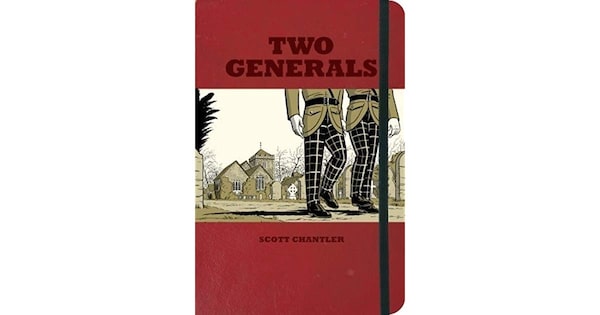
D-Day, The British 2nd Army: second-wave troops of 9th Canadian Infantry Brigade, probably Highland Light Infantry of Canada, disembarking with bicycles from LCI(L)s (Landing Craft Infantry Large) onto 'Nan White' Beach, JUNO Area at Bernieres-sur-Mer, shortly before midday on June 6, 1944.IWM/Getty Images/Getty Images
June 5, 1944: Closing a BBC broadcast, citizens of Nazi-occupied Europe heard three lines from the Verlaine poem Chanson d’automne:
… Blessent mon coeur
D’une langueur
Monotone …
(… Wound my heart
With a monotonous
Languor …)
It was the signal to the French Underground: D-Day, the long-awaited Allied invasion of France, was on.
Utah, Omaha, Gold, Juno and Sword. Of these code-named Normandy beaches, the Canadians would contend with the Nazis’ much-vaunted Atlantic Wall at Juno, its tidewaters riddled with mines and bristling with anti-tank steel “hedgehogs.” On the waves, Canadian minesweepers cleared the lanes for the invading fleet, the largest armada in history. In the air, Canadian paratroopers leapt into the black of night in the vanguard attack.
Of the 14,500 Canadian soldiers who took part in the landing, 340 were dead and 574 wounded by the end of June 6. What they won with their foothold in northern France was invaluable: the beginning of the end of the war in Europe.
75TH-ANNIVERSARY EDITION OF A CLASSIC D-DAY HISTORY
The Longest Day: June 6, 1944 (1959) and A Bridge Too Far by Cornelius Ryan (2019 Library of America edition, 1,008 pages, $58)

There are plenty of authoritative histories of the D-Day landings, but few can match Cornelius Ryan’s storytelling prowess in The Longest Day. The title comes from a comment by German Field Marshal Erwin Rommel, who knew the success or failure of the potential Allied invasion would determine the outcome of the entire war: “The first 24 hours of the invasion will be decisive … for the Allies, as well as Germany, it will be the longest day.” This edition comes packaged with another of Ryan’s Second World War histories, A Bridge Too Far, about the failed Operation Market Garden in the occupied Netherlands.
A REAL-LIFE THRILLER ABOUT THE SPIES WHO MADE D-DAY POSSIBLE
Double Cross: The True Story of the D-Day Spies (2012) by Ben Macintyre (Crown, 416 pages, $23)

Handout
The Germans had the resources to fight the invasion back into the sea. There were several reasons why they didn’t, including a befuddling command structure and several officers being away from their posts the day of June 6. The most significant reason, however, is that the Nazis expected an assault at Normandy, but only to divert troops from where they thought they would be needed during the real invasion at Calais. The fictitious Calais offensive is what British intelligence wanted German military brass to believe – and they did believe it, all the way to Hitler. Double Cross tells how double-agents fed this misinformation to the Germans and gave the D-Day landings a chance.
A DETAILED, COMPREHENSIVE VIEW OF THE CANADIAN CONTRIBUTION
Juno Beach – Canada’s D-Day Victory: June 6, 1944 (2004) by Mark Zuehlke (Douglas & McIntyre, 352 pages, $35)

Handout
Books such as The Longest Day that take an overview of D-Day do acknowledge the Canadian contribution. Yet, as Canadian military historian Mark Zuehlke writes: “In my imagining, the Canadian experience of this seminal historic day had to have been well trodden by past writers, but on closer inspection I discovered the truth to be entirely different.” Zuehlke seeks to rectify this with a close study of the victory on June 6, as the Canadians took several seaside towns and pressed inland toward the city of Caen. Amphibious military landings pose extreme risks – a fact the Canadians knew well from their enormous losses during the 1942 Dieppe raid. Juno proved what the Allies learned from that prior disaster.
IN THEIR OWN WORDS: CANADIAN VETERANS REMEMBER THAT DAY
D-Day: Juno Beach, Canada’s 24 Hours of Destiny (2004) by Lance Goddard (Dundurn, 256 pages, e-book: $9.99)

Handout
Author Lance Goddard weaves together interviews with 33 Canadian D-Day veterans to present an hour-by-hour, first-hand account of the Normandy landing. A benefit of this boots-on-the-ground view is that it gives a strong sense of the frenzied confusion of battle, despite the operation’s best-laid plans. Goddard does provide an introduction and attempts to stitch together these accounts into a coherent narrative, although readers less familiar with the events of June 6 may want to pick up D-Day as a companion read with Juno Beach or The Longest Day for context.
A STORY OF FRIENDSHIP, COURAGE AND SACRIFICE – GREAT FOR TEENS
Two Generals (2010) by Scott Chantler (McClelland & Stewart, 152 pages, $22)

Scott Chantler based this graphic memoir on the diary of his grandfather, Law Chantler, a lieutenant in the Highland Light Infantry of Canada. The story follows Law and his best friend Jack Chrysler, also an officer in the HLI, who enlist together in 1942 and ship out to England to eventually deploy on D-Day. Among this book’s recommendations is its focus on the otherwise little-discussed battle of Buron, a town on the road to Caen. Chantler’s illustrations, evocative framing and story structuring give Two Generals a poignant immediacy that text alone can’t equal. This book is ultimately about what D-Day meant – to the world war, but more so to the soldiers personally – and that makes it a great read, for teens and adults alike.
Expand your mind and build your reading list with the Books newsletter. Sign up today.